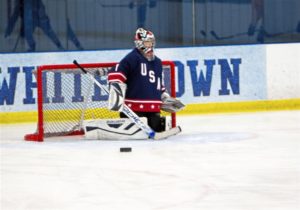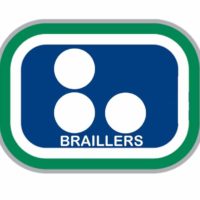The Hartford Braillers
Blind Hockey in Connecticut
Can you imagine playing ice hockey with little or no eyesight at all? Many athletes are now doing just that, as part of one of the fastest growing para-sports across North America. From New England to the Pacific Northwest, Midwest, and Mid-Atlantic, blind hockey teams are meeting regularly to practice their hockey skills and new players are learning to skate for the first time!
As Connecticut was once home of the Hartford Whalers, it is now home of the Hartford Braillers – a blind hockey team. Team practices are held at Newington Arena. Players of any level of experience are always welcome. The game of blind hockey is played with the following adaptations:
Adaptations to the game:
Most aspects of blind hockey remain the same as what you might see in the NHL with the following modifications:

The Puck – The puck is three times the size of an NHL puck, is made of aluminum, and is filled with ball bearings that create a loud noise when the puck is in motion.

The Goal – A blind hockey goal is one foot shorter than a standard NHL goal. This encourages players to keep the puck lower to the ice.
Passing – The attacking team must make one pass to a team mate after entering the opposing blue line before a player is eligible to score a goal.
Uniforms – Teams wear high contrasting uniforms on the ice to improve visibility of players. Games usually consist of a black team and a yellow team.
Positioning – Players with most vision (B3-B4) usually play forward positions while players with less vision (B2-B1) tend to play defense. All goalies have no vision (B1) or have vision occluded.
Visual Classifications
B1: No light perception in either eye up to light perception, and an inability to recognize the shape of a hand at any distance or in any direction.
B2: From ability to recognize the shape of a hand up to visual acuity of 20/600 and/or a visual field of less than 5 degrees in the best eye with the best practical eye correction.
B3: From visual acuity above 20/600 and up to visual acuity of 20/200 and/or a visual field of less than 20 degrees and more than 5 degrees in the best eye with the best practical eye correction.
USABA Recognized Low Vision Classification
B4: From visual acuity above 20/200 and up to visual acuity of 20/70 and a visual field larger than 20 degrees in the best eye with the best practical eye correction.
